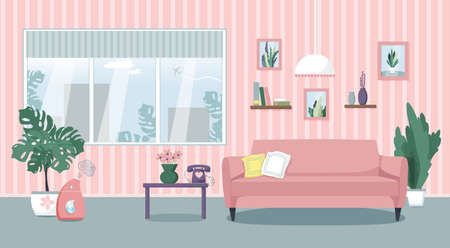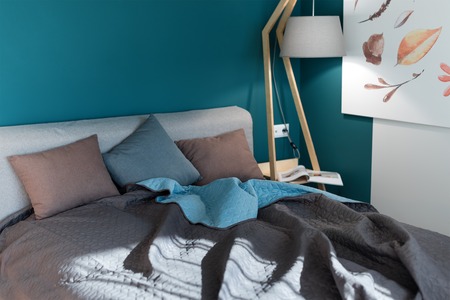Understanding the Interaction Between Light and Color
When it comes to designing a bedroom, the relationship between lighting and color is foundational. In American homes, both natural sunlight and artificial lighting play major roles in how wall colors and décor are perceived. Morning sunlight can make cool tones feel crisp and energetic, while warm afternoon rays may soften those same shades, adding a golden touch. At night, your choice of light bulbs—whether LED, incandescent, or smart lighting—will dramatically shift color undertones. Understanding this dynamic is crucial for making choices that reflect your style and set the right mood. By observing how different lights interact with your favorite hues throughout the day, you set yourself up to create a space that feels just right—inviting, stylish, and uniquely yours.
2. Natural Light Variations and Their Impact
Understanding how natural light shifts throughout the day is key to selecting the right bedroom color. Sunlight changes not just in intensity, but also in color temperature as it moves across your space. The direction your bedroom windows face—north, south, east, or west—plays a huge role in how colors appear on your walls and decor.
Light Direction: A Subtle Game Changer
| Window Direction | Morning | Noon | Evening |
|---|---|---|---|
| North-Facing | Cool, dim light | Soft, steady cool tones | Slight blue-grey cast |
| East-Facing | Bright, warm yellow light | Neutralizes by midday | Cools down, softer shadows |
| South-Facing | Steady, bright warmth | Consistent strong sunlight | Warmest glow at sunset |
| West-Facing | Softer, indirect light | Neutral, slightly warm hues | Dramatic golden tones |
The Influence of Intensity and Color Temperature
The intensity of sunlight can make soft pastels feel washed out at noon or add depth to bold colors during golden hour. Cooler morning light enhances blues and grays, while evening sun brings out richer reds and golds. This dynamic interplay means that a paint color sample may look completely different at sunrise compared to sunset.
Design Tip:
If you crave a serene vibe, consider how much direct sunlight your bedroom receives. North-facing rooms benefit from warmer shades to offset cool light; south-facing rooms can handle cooler tones without feeling cold.

3. Artificial Lighting: Types, Temperatures, and Fixtures
In American homes, artificial lighting plays a pivotal role in how bedroom colors are experienced after sunset. The three most common types—incandescent, LED, and CFL—each cast a unique influence on wall tones and textiles.
Incandescent Bulbs
Warm and familiar, incandescent bulbs emit a soft yellow glow that enhances earthy hues like beige, terracotta, or olive green. However, they can mute cooler shades, making blues or grays appear duller than intended.
LED Lighting
LEDs dominate modern bedrooms for their energy efficiency and customizable color temperatures. Choose warm white LEDs (2700K-3000K) to create a cozy atmosphere that flatters reds and browns. For a crisp, airy vibe—ideal for whites or pastel palettes—opt for cool white LEDs (4000K-5000K). Smart LEDs also allow you to adjust the light throughout the day, tailoring it to your mood or activities.
CFL Bulbs
Compact fluorescent lights offer balanced brightness and are often found in bedside lamps or overhead fixtures. Their neutral tone works well with both warm and cool color schemes but may render vivid shades less saturated.
Fixture Styles Matter
The shape and material of your fixtures add another layer of complexity. Pendant lamps diffuse light gently across walls, minimizing harsh contrasts. Recessed lighting creates focused pools that accentuate feature walls or artwork. Fabric lampshades soften illumination, bringing out subtle undertones in paint colors and textiles.
Design Tip
Layer multiple light sources—overhead lights, sconces, table lamps—to control how your bedroom colors shift from dawn to dusk. This approach lets you curate ambiance while ensuring every shade looks intentional and inviting.
4. Choosing Bedroom Colors for Different Lighting Scenarios
Selecting the right bedroom color isn’t just about personal taste—it’s about understanding how your space interacts with light. Whether you’re dealing with bright morning sun, cozy ambient bulbs, or a shaded retreat, your lighting will affect how every color looks and feels. Here’s how to make smart choices based on your bedroom’s unique lighting situation.
Analyze Your Light Source
First, identify your primary light source. Is it natural daylight streaming through large windows, soft lamplight in the evening, or overhead LEDs? Each type of lighting can shift color tones dramatically.
| Lighting Type | Color Recommendations | Design Tips |
|---|---|---|
| North-facing (Cool Light) | Warm neutrals, creamy whites, peach, blush | Add metallics or wood accents to balance coolness |
| South-facing (Bright/Warm Light) | Crisp blues, cool grays, sage green | Use matte finishes to avoid glare |
| East-facing (Morning Light) | Pale yellows, soft greens, powder blue | Layer in textured fabrics for morning coziness |
| West-facing (Evening Light) | Earthy tones, terracotta, muted lavender | Add dimmable lamps for evening flexibility |
| Artificial/LED Lighting | Neutral grays, modern taupe, off-white | Select bulbs with adjustable warmth for versatility |
Test Before You Commit
No matter your scenario, always test paint samples on your walls. Observe them at different times of day—colors often shift under changing light. For decor like bedding or curtains, bring fabric swatches home and see how they interact with both sunlight and artificial light in your bedroom.
Pro Tip: Layer Your Lighting
In U.S. bedrooms, layered lighting is key: mix overhead fixtures with bedside lamps and accent lights. This way, you can subtly adjust the mood and enhance your chosen colors throughout the day.
Your Color Palette Should Reflect Your Mood Goals
If you want a calm oasis, stick to soft neutrals in rooms with lots of sunlight. For cozy vibes in low-light bedrooms, go richer and warmer. Remember: the right color under the right light makes all the difference.
5. Design Tips: Balancing Mood, Function, and Style
Start with Your Lighting Plan
Lighting sets the tone for your bedroom, so begin by identifying the sources—natural light, overhead fixtures, lamps, and accent lighting. Layering light helps you adapt the space from energizing mornings to cozy evenings. Opt for dimmable switches or smart bulbs to adjust brightness and warmth according to your needs.
Choose a Color Palette That Complements Light
Consider how different colors interact with various lighting types. Warm whites and soft neutrals enhance natural daylight, while cool blues or muted greens can soothe under artificial light. If your bedroom gets limited sunlight, avoid dark or overly saturated shades that may make the room feel smaller or less inviting.
Blend Function with Style
Select bedding, curtains, and rugs in textures that reflect your personal taste but also serve a purpose—think blackout drapes for restful sleep or layered linens for visual interest. Use mirrors strategically to bounce light around and add depth without cluttering the design.
Create a Restful Retreat
Design with comfort in mind. Soften harsh edges with plush throws or upholstered headboards. Integrate calming elements like plants or artwork that reflect your style but don’t compete with your color scheme. Remember, a balanced mix of mood-enhancing hues and purposeful lighting creates a sanctuary that feels uniquely yours.
Designer-Approved Finishing Touches
Edit accessories to keep the look clean and intentional. Choose a few statement pieces—a sculptural lamp, a chic vase—that highlight your style without overwhelming the space. In American bedrooms, less is more: focus on quality over quantity for a serene, on-trend atmosphere.
6. Real-Life Inspiration: U.S. Bedroom Makeovers
Nothing illustrates the power of lighting and color quite like real-life transformations. Across the U.S., homeowners have elevated their bedrooms by rethinking both their lighting and color palettes. Consider a typical suburban master bedroom with beige walls and dim, yellow-toned bulbs. The space felt dated and small. After a makeover, cool white LED lights were installed, and the walls were painted a calming light blue. The new lighting brought out the freshness of the color, making the room feel open and contemporary.
Another inspiring example comes from an urban apartment in New York City. Originally, the bedroom was painted a trendy charcoal gray but relied on harsh overhead lighting that cast unflattering shadows. By swapping in layered lighting—soft bedside lamps, wall sconces, and warm bulbs—the gray walls took on a cozy, inviting tone instead of feeling cold or stark. This shift not only changed the mood but also made the space more versatile for relaxation and work.
These before-and-after stories highlight a key design principle: In American homes, lighting isn’t just functional—it’s transformative. By thoughtfully pairing your preferred color scheme with the right type of lighting, you can create a bedroom that truly reflects your lifestyle and personal taste. So before you settle on a paint swatch or a set of bulbs, take inspiration from these makeovers and envision how your own space could shine brighter with intentional choices.

